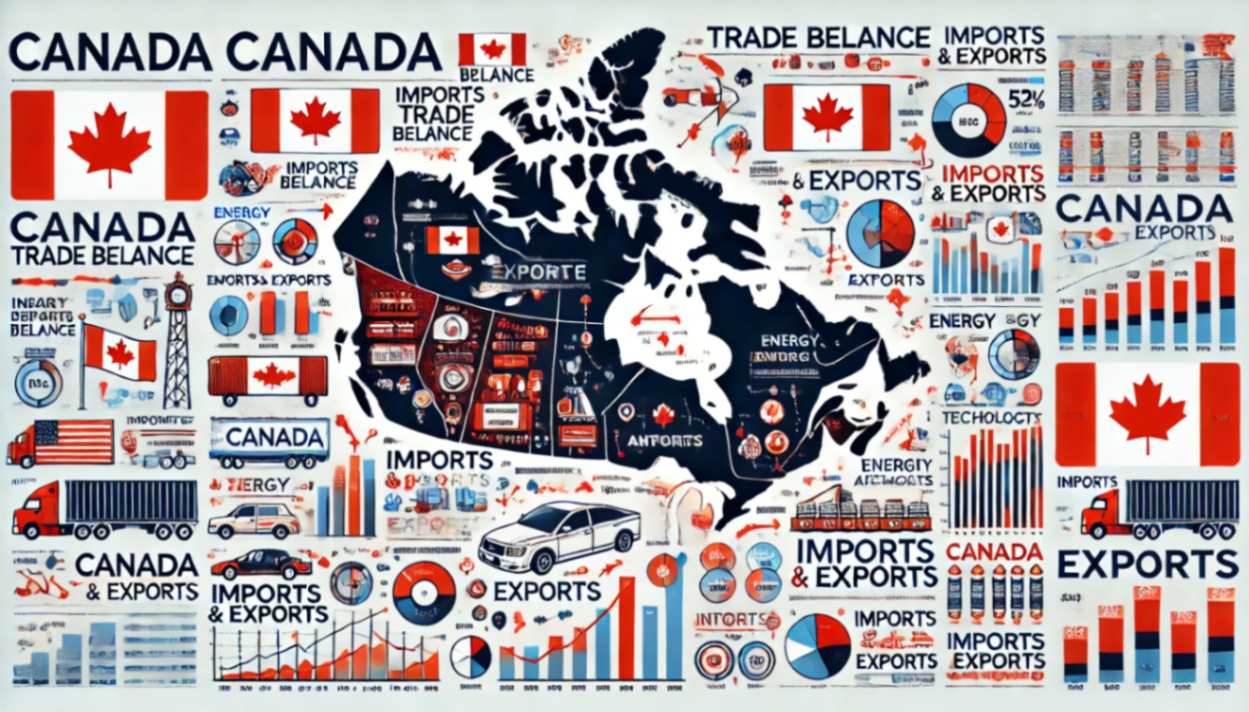The world of forex trading is vast and ever-changing. Among the multitude of factors influencing currency movements, the trade balance of a country stands out as a critical indicator. For traders focusing on the Canadian Dollar (CAD), understanding shifts in Canada’s trade balance can provide valuable insights and enhance trading strategies. In this article, we will delve into the intricacies of Canada’s trade balance, its impacts on forex trading, and effective strategies to navigate these shifts successfully.
What is Trade Balance?
The trade balance is a measure of a country’s exports minus its imports. When a country exports more than it imports, it has a trade surplus. Conversely, a trade deficit occurs when imports exceed exports. For Canada, a nation heavily reliant on exports, the trade balance plays a significant role in the health of its economy and the strength of its currency.

Canada’s Trade Balance
Canada’s economy is intricately linked to its trade activities. As one of the world’s largest exporters of natural resources, including oil, minerals, and lumber, fluctuations in global demand and prices for these commodities directly impact Canada’s trade balance. Additionally, trade agreements, geopolitical events, and economic policies can cause significant shifts in trade dynamics.
The Relationship Between Trade Balance and Forex Trading
Understanding the relationship between a country’s trade balance and its currency value is crucial for forex traders. A trade surplus generally strengthens the national currency, as foreign buyers convert their currency to purchase goods. Conversely, a trade deficit can weaken the currency due to higher demand for foreign currencies to pay for imports. Thus, shifts in Canada’s trade balance can lead to fluctuations in the value of the CAD, presenting both opportunities and risks for traders.
Analyzing Canada’s Trade Data
To make informed trading decisions, it’s essential to analyze Canada’s trade data. The trade balance is reported monthly by Statistics Canada and can be accessed through various financial news platforms. Key data points to consider include the total value of exports and imports, the balance of trade, and trends over time. By examining these figures, traders can identify patterns and anticipate potential market movements.

Factors Influencing Canada’s Trade Balance
Several factors can cause shifts in Canada’s trade balance:
- Commodity Prices: As a major exporter of commodities, fluctuations in global commodity prices significantly impact Canada’s trade balance.
- Exchange Rates: Changes in the CAD exchange rate affect the competitiveness of Canadian exports and the cost of imports.
- Global Demand: Economic conditions in trading partner countries influence demand for Canadian goods.
- Trade Policies: Tariffs, trade agreements, and regulatory changes can alter trade dynamics.
- Domestic Economic Conditions: Inflation, interest rates, and economic growth within Canada also play a role.
Impact of Trade Balance Shifts on CAD
Changes in Canada’s trade balance can lead to volatility in the CAD. A trade surplus typically boosts the CAD, making Canadian goods more expensive for foreign buyers and reducing import costs. On the other hand, a trade deficit can depreciate the CAD, making exports cheaper and imports more expensive. Traders need to monitor these shifts to anticipate currency movements and adjust their strategies accordingly.
Strategies for Trading the CAD Amid Trade Balance Shifts
- Stay Informed: Keep up-to-date with economic reports, news, and events that could impact Canada’s trade balance.
- Technical Analysis: Use charts and technical indicators to identify trends and potential reversal points in the CAD.
- Fundamental Analysis: Analyze economic indicators, such as GDP growth, inflation, and employment data, to gauge the overall health of the Canadian economy.
- Diversify: Spread risk by trading multiple currency pairs and not relying solely on the CAD.
- Risk Management: Set stop-loss orders and manage leverage to protect against adverse market movements.
Leveraging Economic Indicators
In addition to trade balance data, several other economic indicators can provide valuable insights for trading the CAD:
- Gross Domestic Product (GDP): A strong GDP growth rate can indicate a robust economy and support the CAD.
- Inflation Rates: High inflation can erode the value of the CAD, while low inflation can strengthen it.
- Employment Data: High employment levels typically signal economic strength and support the CAD.
- Interest Rates: Higher interest rates can attract foreign investment, boosting the CAD, while lower rates can have the opposite effect.
The Role of Central Bank Policies
The Bank of Canada’s monetary policies significantly influence the CAD. Interest rate decisions, quantitative easing programs, and statements from central bank officials can all impact currency values. Traders should pay close attention to announcements from the Bank of Canada and interpret how these policies might affect the trade balance and the CAD.
Technical Analysis Tools for CAD Trading
To enhance trading strategies, traders can utilize various technical analysis tools:
- Moving Averages: Identify trends and potential reversal points.
- Relative Strength Index (RSI): Measure the momentum and identify overbought or oversold conditions.
- Bollinger Bands: Assess volatility and potential breakout points.
- Fibonacci Retracement Levels: Identify potential support and resistance levels.
Case Studies: Historical Shifts in Canada’s Trade Balance
Examining historical shifts in Canada’s trade balance and their impact on the CAD can provide valuable lessons for traders. For instance, significant changes in oil prices, a key export commodity for Canada, have historically led to substantial movements in the CAD. By studying these cases, traders can better anticipate how future shifts might play out.
Developing a Long-Term Trading Strategy
While short-term trading can be profitable, developing a long-term strategy can provide more stability and consistent returns. Consider factors such as economic cycles, long-term trends in commodity prices, and geopolitical developments. A well-rounded strategy that incorporates both technical and fundamental analysis will help traders navigate the complexities of forex trading more effectively.
Conclusion
Understanding and navigating shifts in Canada’s trade balance is essential for smart forex trading. By staying informed, utilizing both technical and fundamental analysis, and implementing effective risk management strategies, traders can capitalize on opportunities and mitigate risks associated with currency fluctuations. The dynamic nature of forex trading requires continuous learning and adaptation, but with the right approach, traders can achieve success in this exciting market.
FAQs
1. How often is Canada’s trade balance data released?
Canada’s trade balance data is released monthly by Statistics Canada.
2. What are the key factors that influence Canada’s trade balance?
Key factors include commodity prices, exchange rates, global demand, trade policies, and domestic economic conditions.
3. How does a trade surplus impact the Canadian Dollar (CAD)?
A trade surplus typically strengthens the CAD, as foreign buyers convert their currency to purchase Canadian goods.
4. What are some effective strategies for trading the CAD?
Effective strategies include staying informed, using technical and fundamental analysis, diversifying trades, and implementing risk management practices.
5. How can traders stay updated on factors affecting Canada’s trade balance?
Traders can stay updated by following economic reports, news outlets, and announcements from the Bank of Canada and other relevant authorities


